Anthropocene: No ice age – more blizzards?
If you are sitting somewhere on the East Coast of the USA, struggling to cope with 30 inches of snow, you might be forgiven for reacting with relief to a report released by the Potsdam Institute for Climate Impact Research (PIK) indicating human-made climate change is suppressing the next ice age. With a wink in your eye, you might be very grateful that these extreme conditions are only going to last for a few days and not become the everyday normality of a new ice age.
There are those (but increasingly few of them) who might even thank the fossil fuels industries for averting a scenario like “The Day after Tomorrow” and ensuring that the relatively comfortable interglacial in which we live is likely to continue for the next 100,000 years. That is the conclusion of the study published in the scientific journal Nature.
The problem is that postponing an ice-age illustrates that human interference with natural climate cycles over a relatively short time has the potential to change the world for a hundred thousand years to come, with all the problems that come with it. And given that the increase in extreme weather events like the US snowstorm is highly probably related to anthropogenic climate change, perhaps an ice age in 50,000 years would be the lesser evil.
Burn fossil fuels, suppress the ice age
Using complex models to try to find out which factors influenced the last eight glacial cycles in earth history and what is likely to lie ahead of us, the scientists found that as well as astronomical factors like the earth’s position in relation to the sun in different stages of its orbit, the CO2 concentration in the atmosphere is a key factor.
I talked to physicist and earth systems modeler Andrey Ganopolski, lead author of the study to find out more about the research and the background.
According to Milankovich’s theory, a new ice age should occur when the earth is far away from the sun and summer is colder than usual in the northern hemisphere, at high latitudes in Canada and northern Europe. These are the areas where big ice sheets can grow. At the moment, Ganopolski explained, we have a situation where our summer occurs when the earth is far from the sun. So in principle, we have the conditions when a new ice age can potentially start. He and his colleagues wanted to understand why we are not living in an ice age when astronomically, the conditions are just right to move towards a new ice age.
Meddling with the planet
They come to the conclusion that naturally, without any anthropogenic influence, we would expect the new ice age to start around 50,000 years from now. That would mean that this interglacial, the Holocene, in which we live now, would already be unusually long. In the past, an interglacial lasted only 10 or 20,000 years, but this one is expected to last for 60,000 years.
But our emissions of greenhouse gases are postponing this even further. Relatively large anthropogenic greenhouse gas emissions – say two to three times what we already emitted – would, according to the scientists’ model, additionally postpone the next ice age, so that it would only start 100, 000 years from now, so we would completely skip one glacial cycle, which never happened in the last three million years.
Humankind as a geological force
Now regardless of whether you are a fan of ice and snow or one of those who say they can happily live without any more ice ages, the study’s findings illustrate just how long anthropogenic influence on climate will continue. Humanity, it seems, has become a geological force that is able to suppress the beginning of the next ice age, according to the PIK experts. Human behavior is changing the natural cycles that have shaped the global environment and human evolution.
Over the last 3 million years, glacial cycles were more or less regular. Most of the evolution of humans occurred during those last three million years. Ganopolski says humans can be seen as a kind of product of glacial cycles, because the conditions were probably right to increase the size of our brain, because we had to be clever to survive in such a variable climate.
Who cares?
But given that it is easier and pleasanter to live in non ice-age conditions, there is still an understandable tendency to respond to the ice-age-postponement announcement with: “so what?”
Ganopolski argues one reason the study is significant is that it does away with the arguments of some climate skeptics who have argued that warming the atmosphere by burning fossil fuels is not a bad thing, because it could avert an “imminent” ice age (a theory first made popular around thirty years ago, he says). Since the research indicates there is none on the horizon for more than 50,000 years anyway, this is nonsense, says Ganopolski.
But the main reason the research findings deserve attention, he says, is that they show we can affect the climate for up to a hundred thousand years. He believes a lot of people think if we stop using fossil fuels tomorrow or the day after, everything will be fine. In fact, anthropogenic carbon dioxide will stay in the atmosphere for an extremely long time. “That means we are affecting earth’s future on a geological time scale”, he says.
Whether the next ice age comes in 50,000 or 100,000 years may seem irrelevant to a lot of people, faced with the concerns of life today. But the effects of our warming the globe are already being felt and will have considerable implications well before that, Ganopolski reminds us. He says the new study just shows how massive our interference with the earth’s systems is, and backs up the need to take action now to cut greenhouse gas emissions.
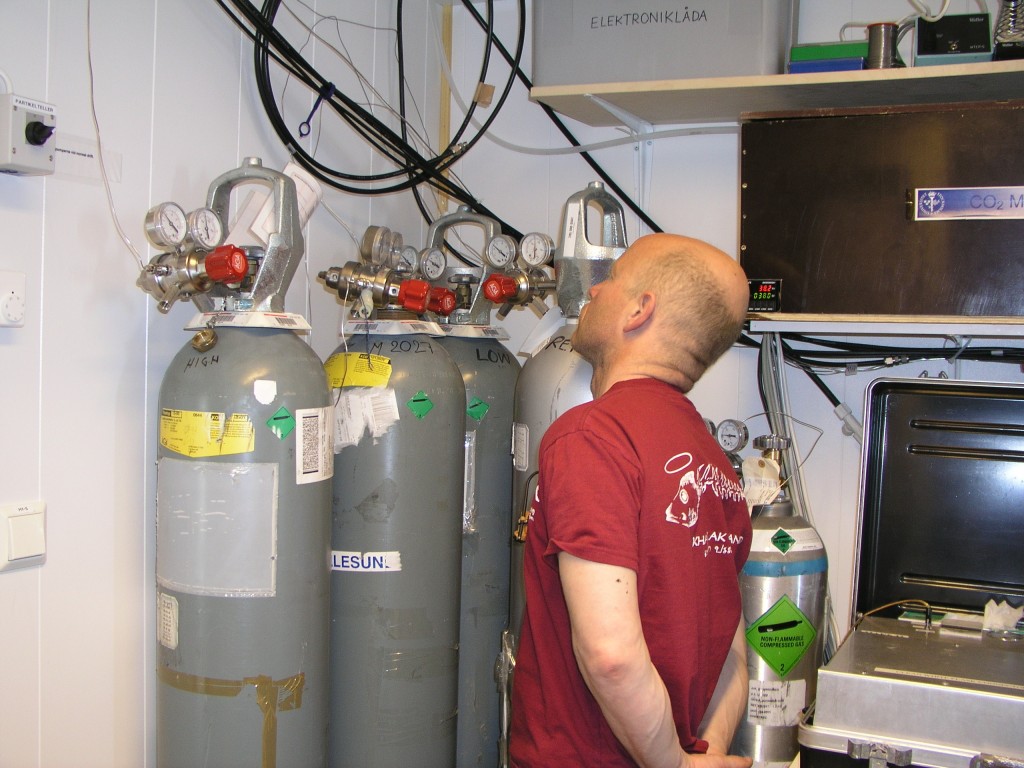
Rising CO2 emissions are influencing glacial patterns (Measuring station on Svalbard, Pic. I. Quaile)
Greenland and Antarctic in the Anthropocene
He mentions the research also deals with Greenland and Antarctica:
“What we show is that even with the CO2 concentration we have already, we can expect that a substantial fraction of these ice sheets will melt. So obviously, in this respect, any further increase of CO2 will have even more negative effects”.
Sea level rise, ocean acidification, changing food supplies, floods, droughts…and, yes, even more of those extreme blizzards, fuelled, paradoxically, by warming seas…maybe there is more to this delaying the ice age business than first seemed.
So are we living in the “Anthropocene”, i.e. an era in which not nature but humankind is determining the shape of the world we live in now and for centuries to come? Ganopolski and his colleagues say yes. He stresses what we are doing to the climate and the speed at which it is happening represent unprecedented, substantial deviation from the natural course of things.
“So if you continue to emit a substantial amount of carbon dioxide, the Anthropocene will last for hundreds of thousands of years, before systems return to anything like “normal” conditions”, he says.
Another study published in Nature today provides further evidence that human intervention is responsible for the annual heat records that have been in the news so often recently they run the risk of losing their news value. Ganopolski’s PIK colleague Stefan Rahmstorf, one of the authors, says the heat records, with 13 of the last 15 years the warmest since records began, can no longer be explained by natural climate variation. But they can be explained by human-induced climate change.
But is there any point in making potentially uncomfortable changes to the way we live today if we have already changed the atmosphere so massively, for such a long time to come? Ganopolski stresses the extent and speed of the changes and impacts are no grounds for resignation:
“There is no justification for making the climate even warmer than it is. It is a matter of how much CO2 we will emit into the atmosphere. Basically, it will affect all generations, and if we care about them, we should stop using fossil fuel as soon as possible.”
Sounds sensible to me.
Arctic climate: positive narrative?
As 2015 draws to a close, the NOAA report card on the state of the Arctic and a substantial new study on the Greenland ice sheet belie the myth that the Paris climate conference has put us on track for averting the worst climate change impacts. NOAA confirms that the Arctic experienced record air temperatures and a new low in peak ice extent during 2015, and the scientists warn that climate change is having “profound effects” on the entire marine ecosystem and the indigenous communities that rely on it.
![]() read more
read more
Can Paris avert climate threat to cryosphere?
To those of us who work on polar subjects, there is no question about the relevance of the cryosphere to the annual UN climate negotiations. But in the run-up to the annual mega-event – especially in a year dubbed by some to be the “last chance” for climate – it was not easy to get attention for the Arctic, Antarctic and high-altitude peaks and glaciers of the world.
I had a discussion with some of my colleagues who focus on Africa and Asia. With problems like political unrest, wars, famine and drought to cope with, the fate of polar bears, one told me, is completely irrelevant.
You could say this colleague is suffering from a kind of tunnel vision. But it also prompts me to wonder whether the way we communicate the threat of climate change is partly to blame.
Not just polar bears
Earlier this week I read about a study indicating that people were more likely to donate to campaigns which focus on people, on social injustice rather than on conservation and environmental degradation. Somehow, we journalists have to make the connection between the two. When you remind people that increasing sea levels caused to a large extent by changes in our ice sheets pose a huge threat not only to small island states but to many of the world’s megacities, the cryosphere takes on a new relevance. Not to mention the fact that the ice, snow and permafrost covered regions of our planet play a major role in regulating the world’s climate and water supplies.
One organization that works to bring the attention of delegates at the UN climate talks to our icy regions is the International Cryosphere Climate Initiative, ICCI. In time for this year’s COP21, it commissioned a report from leading scientists: “Thresholds and closing windows. Risks of irreversible cryosphere climate change”. The report summarizes the levels of risk in five key areas: ice sheets loss and related sea-level rise, polar ocean acidification, land glacier loss, permafrost melt, and the loss of Arctic summer sea ice. The report is based on the last IPCC assessment plus literature published in the three years since.
Bringing the ice closer
Pam Pearson is the director and founder of ICCI. I have interviewed her on various occasions, including during visits she made to Bonn, the home of the UNFCCC, to brief delegates. This time we were not able to meet in person, but we have been in Email contact. I asked her how difficult it was to arouse interest within the negotiations at the moment, with so much going on. She told me it was difficult mainly because very few people globally actually live near cryosphere.
“Yet we are all deeply connected to these regions, because of their role in the Earth climate system — especially through sea-level rise, water resources from land glaciers, and permafrost release that will make it harder to meet carbon budgets. “
The Arctic, parts of Antarctica and many mountain regions have already warmed two to three times faster than the rest of the planet, between 2 and 3.5 degrees Celsius up on pre-industrial levels. Climate change is also affecting high altitude areas such as the Himalayas and the Andes, where seasonal glacier melt provides water for drinking and irrigation, especially in dry periods.
When the outside risk becomes the norm
The changes are far more extreme than those forecast in even the most pessimistic scenarios of a few years ago. In the IPCC’s 2007 Fourth Assessment, the outer extreme estimate for sea level rise (mostly from glacier ice melt) was about one meter by the end of this century. Today, the experts say even if we could halt warming now, it would be impossible to avoid sea-level rise of one meter from glaciers, ice sheets and the natural expansion of warming waters, within the next two hundred years. Most scientists also agree that the West Antarctic ice sheet has already been destabilized by warming to the extent where this probably cannot be halted, which will increase sea level further.
Pearson used to be a climate negotiator herself, so she knows the pressures and constraints. She told me that while participants in the climate conferences were broadly aware of issues like ice melt at the poles and on high-altitude glaciers, they tended to lack awareness of two key aspects:
“First, that we have already passed, or are close to passing temperature levels that will cause certain processes to begin; and second, that some of these processes cannot be stopped once they get started.”
She says a “sense of urgency” is lacking, and stresses that although some of the most damaging consequences will only occur in hundreds or even thousands of years, they will be determined by our actions or inactions in the coming few decades. That includes the 2020-30 commitment period that is the focus of the agreement being worked on in Paris Pearson stresses.
The cryosphere needs more ambitious targets
The report analyses the implications of the INDCs, or current pledges put on the table by the countries of the world for the Paris climate talks. The scientists come to the conclusion that these will not be enough to prevent the onset of many irreversible cryosphere processes.
Even the two-degree pathway agreed by the international community translates into a peak cryosphere temperature of between 4 and 7 degrees above pre-industrial levels, according to the ice experts. Yet the UN and others say current commitments would lead to global temperatures 2.7 to 3.5 degrees Celsius above pre-industrial levels by 2100, rising later to between 3.4 and 4.2 degrees. The peak in global carbon emissions would occur well after 2050. The associated temperatures would trigger permanent changes in our ice and snow that cannot be reversed, including the complete loss of most mountain glaciers, the complete loss of portions of West Antarctica’s Ice Sheets and parts of Greenland. This would ultimately equate to an unstoppable sea level rise of a minimum four to ten meters, the scientists find.
In addition, the increase of CO2 being absorbed in the Southern Ocean around Antarctica and the Arctic Ocean is turning the water more acidic and so threatening fisheries, marine ecosystems and species.
Another of the key issues which is often neglected is that of permafrost. About a quarter of the Northern Hemisphere’s land area contains ground that remains frozen throughout the year. This holds vast amounts of ancient organic carbon. So when it thaws, carbon dioxide and methane are released, which fuel further warming. Even a temperature rise of 1.5 degrees could result in a 30% loss of near-surface permafrost. This would mean 50 Gigatonnes of additional carbon emissions by 2100. Given that the total carbon budget allocated to a two-degree temperature rise is only 275 Gigatonnes, that would be a huge factor. The ICCI experts say this thaw would not be reversible, except on geological time scales.
Dwindling Arctic sea ice
Arctic summer sea ice has declined rapidly, especially since 2000. Only about half the sea ice survives the summer today compared to 1950. This is “both a result and a cause of overall Arctic and global warming”, according to the ICCI report. White ice reflects heat into space. When it melts, it is replaced by dark water, which absorbs the heat, exacerbating warming further.
The Arctic sea ice has a tempering effect on global temperatures and weather patterns. It would only be possible to reverse the disappearance of the ice in summer with a return to regular global temperatures of 1 to 2 degrees above pre-industrial times, according to the report.
Andes and Himalayas
Receding mountain glaciers in the European Alps, American Rockies, Andes and East Africa were among the first identified, visible impacts of climate change, originally from natural factors. Sometime in the past 50 years, anthropogenic climate change surpassed natural warming as the main driver of retreat, and caused about two-thirds of glacier melt between 1991 and 2010, according to the ICCI report.
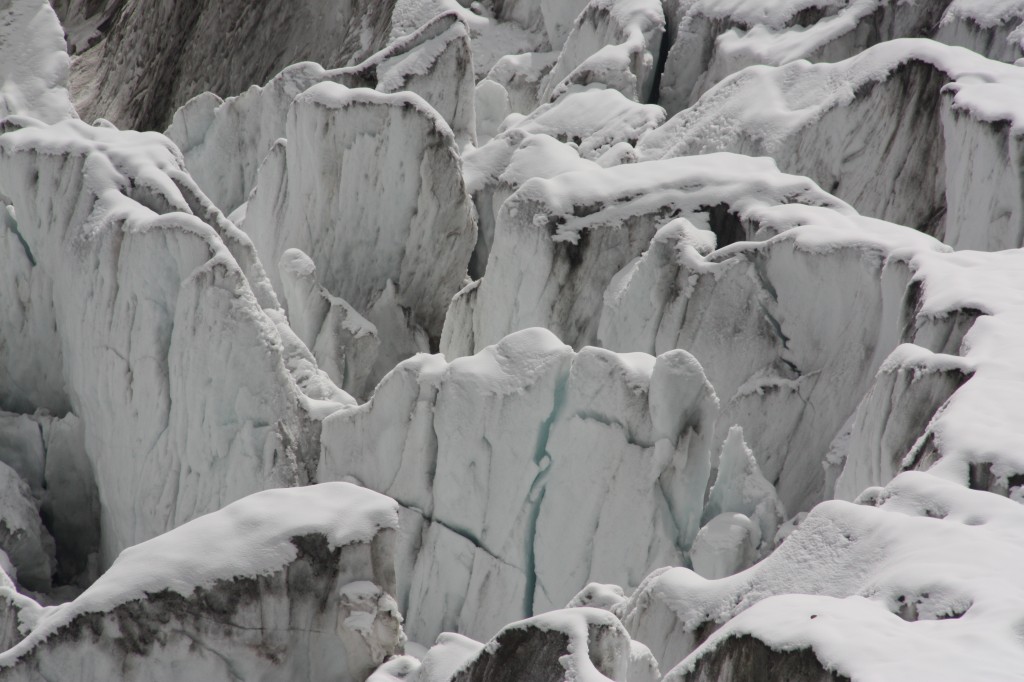
Glaciers – beautiful but highly endangered, like this one I visit regularly in the Swiss alps. (Pic. I.Quaile)
Glaciers are important to nearby communities as a source of water for drinking or irrigation. Some are especially important in dry seasons, heat waves and droughts. Melting glaciers provide an increase in water for a limited time. But ultimately, the lack of water could make traditional agriculture impossible in some regions of the Himalayas or the Andes.
So unless governments in Paris move fast to increase their commitments and bring the deadlines for emissions reductions forward, the windows to prevent some of these irreversible impacts on the polar and high mountain regions may close during the 2020-2030 commitment period.
It is not too late
However, the scientists stress that it is still possible to reduce emissions to the required level, if the political will becomes strong enough. Pam Pearson says the world has to get onto the path towards the two-degree goal now. Like many experts, she says this in itself is risky enough for the cryosphere, and a 1.5 degree pathway would be safer:
“So if countries indeed agree with UNFCCC chief Christiana Figueres’ proposal to meet every five years to strengthen INDCs, moving onto these lower-temperature pathways should be a concrete goal. Perhaps even more important, I understand the French COP presidency may be aiming at strengthening actions PRIOR to 2020, in the 2015-2020 period. This kind of earlier action is really vital, and will make the job of keeping temperatures as low as possible easier”
Without much more ambitious targets, the ICCI study concludes it will be “close to impossible” to avoid rapid deterioration of our snow and ice regions.
The challenge is to make the delegates in Paris understand that that does not just mean cosmetic changes to distant parts of the globe, but that it would also destabilize the global climate, displace millions of people and endanger food and water supplies in many parts of the world.
Energy giant taken to German court for glacier melt
For the first time ever in Europe, a company is being sued for causing climate change.
Essen, in Germany’s famous Ruhr area, once the centre of the country’s industrial development, is the scene of a very interesting court hearing today. A Peruvian smallholder and mountain guide Saúl Luciano Lliuya is suing the German energy concern RWE. He says the enormous amounts of greenhouse gases emitted by the company are jeopardizing his family, his property and a large area of his home town, Huaraz. A lake which is growing rapidly as climate warming melts the glaciers above, is posing a major risk for the town in the Andes and its 120,000 residents.
Climate justice
The ngo Germanwatch, which works to end the north-south divide and is particularly active in advocating climate justice, is advising the farmer from Peru and supporting the court case, which is unprecedented here in Europe and sends out a key signal just days ahead of the Paris COP21.
LLiuya says Huaraz is at risk from flooding. He and his lawyer Dr. Roda Verheyen argue that the Essen-based company is to a large degree responsible for the melting of glaciers in the Andes, and so for the risk to his home, which is located in the valley below.
They want RWE to contribute to the funding of protective measures for the town. And they argue that the energy company’s share should be in line with the amount of responsibility it bears for causing global warming. If the claimants can prove their case, that would presumably be rather a large share.
“Every day I see the glaciers melting and the lakes in the mountains growing”, says Lliuya, in a statement published by Germanwatch. “For us in the valley, this is a huge threat. We can’t just wait and see what happens. For me it is clear that those who are causing climate change should be held responsible: companies all over the world, that change the climate with their greenhouse gas emissions”.
A test case to watch
Luciano Lliuya’s lawyer, Dr. Roday Verheyen, told journalists the case was a test case, without precedent: “ RWE emits especially through its coal-fired power stations. These emissions result in rising temperatures worldwide, melting glaciers and so jeopardize the property of my client”, she said in a statement distributed by Germanwatch. She appealed to the court to assert that RWE bears responsibility for counter-measures.
In late April, the company rejected a claim submitted directly to them.
The idea that climate change is responsible for the melting of glaciers will come as no surprise to Iceblog readers. The IPCC clearly makes the connection. But attributing the cause and financial responsibility to an energy company is not so easy, hence the significance of this case.
In the shadow of a melting ice giant
The town of Huaraz in Peru lies a few kilometres below the Palcacocha glacier lake. Since 2003, it has grown four times as big as it was before. Climate change is also increasing the risk of giant blocks of ice breaking off and tumbling into the lake. That could cause a catastrophic flood wave and metre-high flooding of the settlements below.
The authority responsible for civil protection has warned that this could happen at any moment. It says this is the most dangerous glacial lake in the region. To provide lasting protection against this risk, a new system would have to be built to continually pump off large amounts of water. New barriers would also have to be built around the lake.
A message to Paris
The chairman of Germanwatch, Klaus Milke, stressed the importance of the court case as a signal to the energy sector and the world’s politicians in the run-up to the UN climate conference in Paris.
“Emissions have to drop, so that we do not have an ever-increasing number of people put at risk by climate change. And those who cause these risks must bear the cost of protecting the people affected”, he told journalists.
He stressed it could not be left to individual victims of climate change – who are often very poor – to go to court for assistance:“Ultimately, we need a political solution, to make those who caused the damage take on the responsibility”, Milke added.
According to Germanwatch, RWE describes itself as the biggest single emitter of CO2 in Europe. A survey conducted in 2014 says the concern is responsible for around half a percent of all the greenhouse gas emissions worldwide since the industrial revolution. Although the company is still just one of many responsible for CO2 emissions, Saúl Luciano Lliuya is claiming the company for a “fair share” of the cost of measures to protect his town, around 20,000 euro. This is probably “peanuts” to a global operator like RWE, but it would be an important step. It would involve accepting responsibility for the impacts of emissions-induced climate change, and have potentially huge financial implications.
An interesting one to watch. Will this smallholder from Peru set the ball rolling which could knock the Goliath that is the global energy industry reeling?
Melting glacier risk to seabed ecosystem
On my first visit to the Arctic in 2007, I went out into the Kongsfjord at Ny Alesund, Spitsbergen, with some marine biologists working out of Koldewey station, run jointly by France and Germany. It was June, and the glaciers at the end of the fjord were just starting to thaw. While I was enjoying the blues, whites and greys of the sea, ice and sky, the researchers in the small boat got very excited when they saw the water turned brown, where sediment was flowing into the fjord from the retreating glacier.
“Who turned off the light up there”?
They had been waiting impatiently for the thaw to set in, because their research focus was on what that means for the life forms on the seabed, or benthos. Clearly, if you live down on the sea floor, the intrusion of brown mud and other sediment changes your surroundings. Not least, it means less light coming down from above. Now while a certain amount of that is going to happen naturally every year with the changing seasons, the question is: what happens if there is a big increase in sediment coming in because of increasing melt through climate change?
I was interested to hear about a study published this week in Science Advances, dealing with that same question in the Antarctic. The findings indicate that melting coastal glaciers are having an impact on the entire ecosystem on the seafloor, leading to a loss of biodiversity through sedimentation. The scientists were looking at the West Antarctic peninsula, where the temperature has risen almost five times faster than the global average in the last fifty years.
Global warming changes seafloor communities
The study, published by experts from Argentina, Germany and Great Britain, including the Alfred Wegener Institute, Helmholtz Centre for Polar and Marine Research (AWI,) is based on repeated research dives. The scientists believe increased levels of suspended sediment in the water caused the dwindling biodiversity registered in the coastal region. They say it occurs when the effects of global warming lead glaciers near the coast to begin melting, discharging large quantities of sediment into the seawater.
To find out exactly how and to what extent the retreat of glaciers is affecting bottom-dwelling organisms, researchers at the Dallmann Laboratory are now mapping and analysing the benthos in Potter Cove, located on King George Island off the western Antarctic Peninsula. The lab is operated by the Alfred Wegener Institute and the Argentine Antarctic Institute (IAA) as part of the Argentinian Carlini Station. Researchers have been monitoring benthic flora and fauna there for more than two decades.
In 1998, 2004 and 2010, divers photographed the species communities at three different points and at different water depths: the first, near the glacier’s edge; the second, an area less directly influenced by the glacier; and the third, in the cove’s minimally affected outer edge. They also recorded the sedimentation rates, water temperatures and other oceanographic parameters at the respective stations, so that they could correlate the biological data with these values. Their findings: some species are extremely sensitive to higher sedimentation rates.
Short sea squirts adapt better
Sea squirts are small invertebrate creatures that live on the sea floor and feed by filtering the water through their anatomies.
“Particularly tall-growing ascidians like some previously dominant sea squirt species can’t adapt to the changed conditions and die out, while their shorter relatives can readily accommodate the cloudy water and sediment cover,” says Dr Doris Abele, an AWI biologist and co-author of the study. She is worried that “the loss of important species is changing the coastal ecosystems and their highly productive food webs, and we still can’t predict the long-term consequences.”
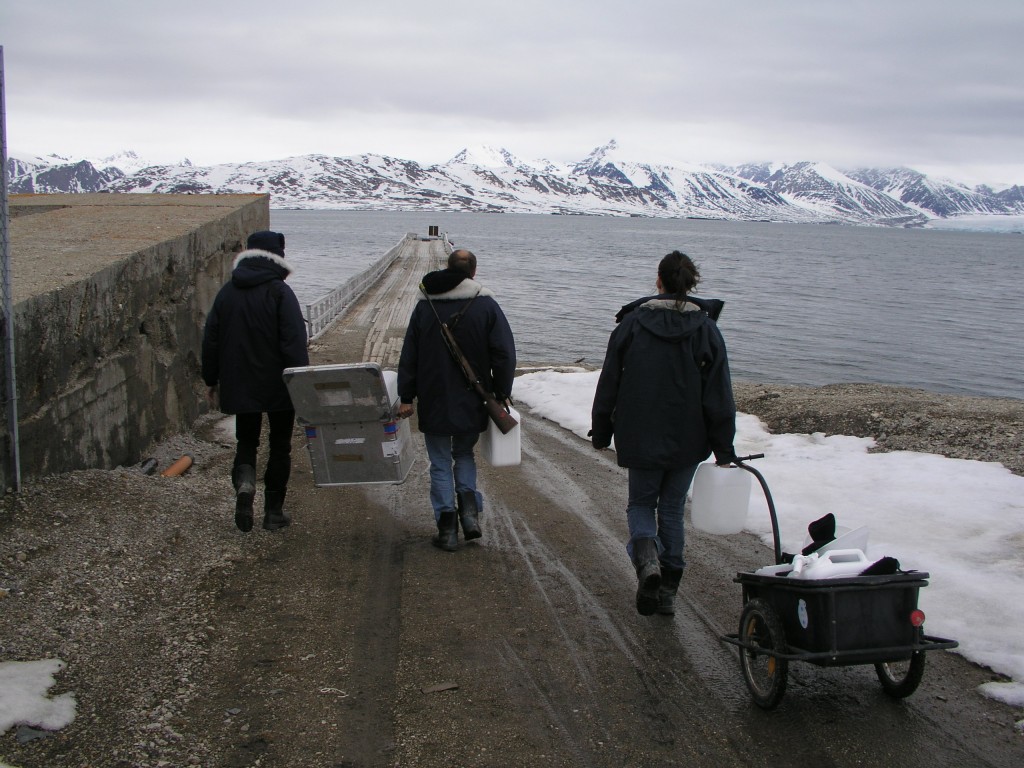
Can Arctic marine biologists work fast enough to keep up with climate change? (Ny Alesund, Pic: I.Quaile)
As with so many aspects of our oceans, there is a lack of base data on how sediment from melting glaciers affects the numerous life forms on the seabed.
“It was essential to have a basis of initial data, which we could use for comparison with the changes. In the Southern Ocean we began this work comparatively late,” says the study’s first author, marine ecologist Ricardo Sahade from the University of Cordoba and Argentina’s National Scientific and Technical Research Council CONICET, who is leading the benthic long-term series. “Combining this series of observations, accompanying ecological research on important Antarctic species, and mathematical modelling allows us to forecast the changes to the ecosystem in future scenarios,” says co-author Fernando Momo from Argentina’s National University of General Sarmiento.
With scientists telling us the ice of the West Antarctic peninsula has already passed a tipping point, the question is whether scientific monitoring and research will be able to keep pace with the rapid rate at which climate warming is already having major impacts on our oceans. For many species of our seabottom-dwelling creatures, the slow pace of greenhouse gas emissions reductions may well come far too late.
See also: Antarctic glaciers retreat unstoppable



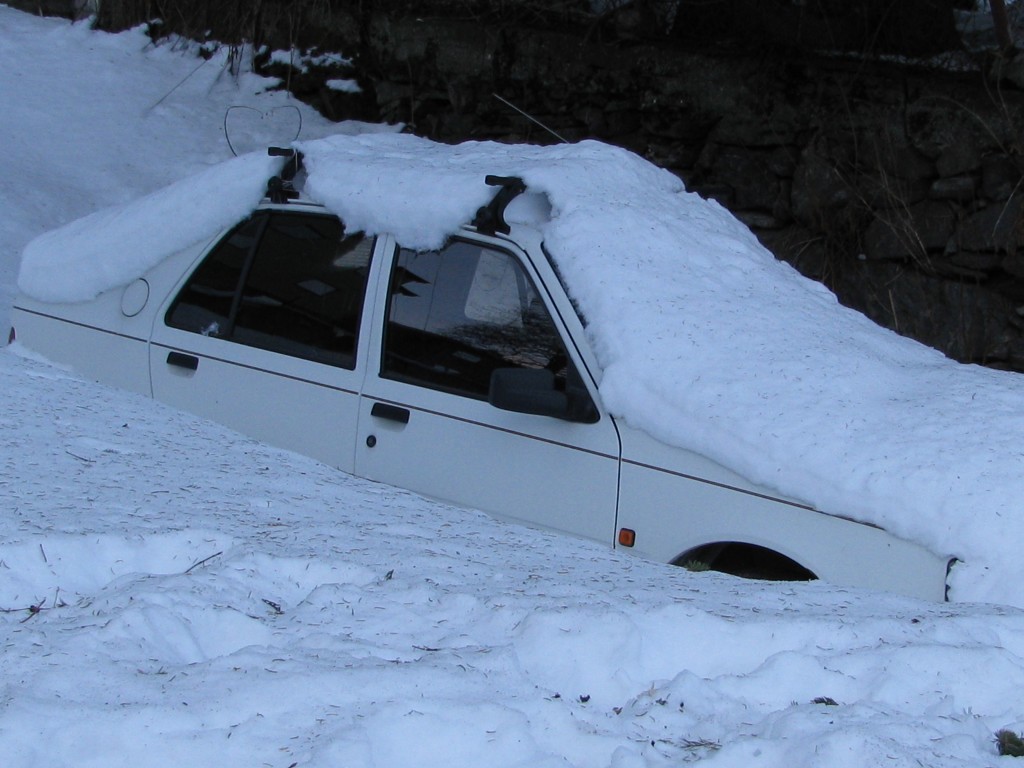
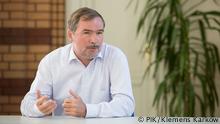
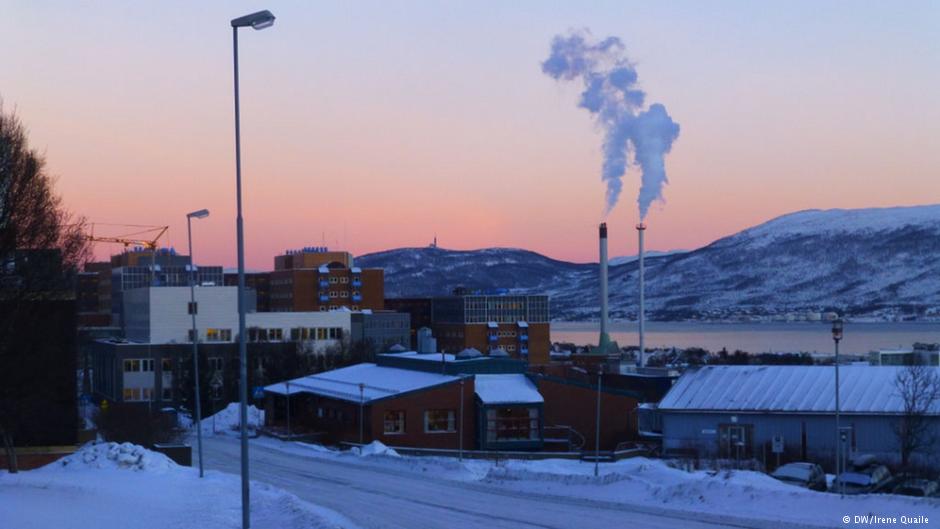
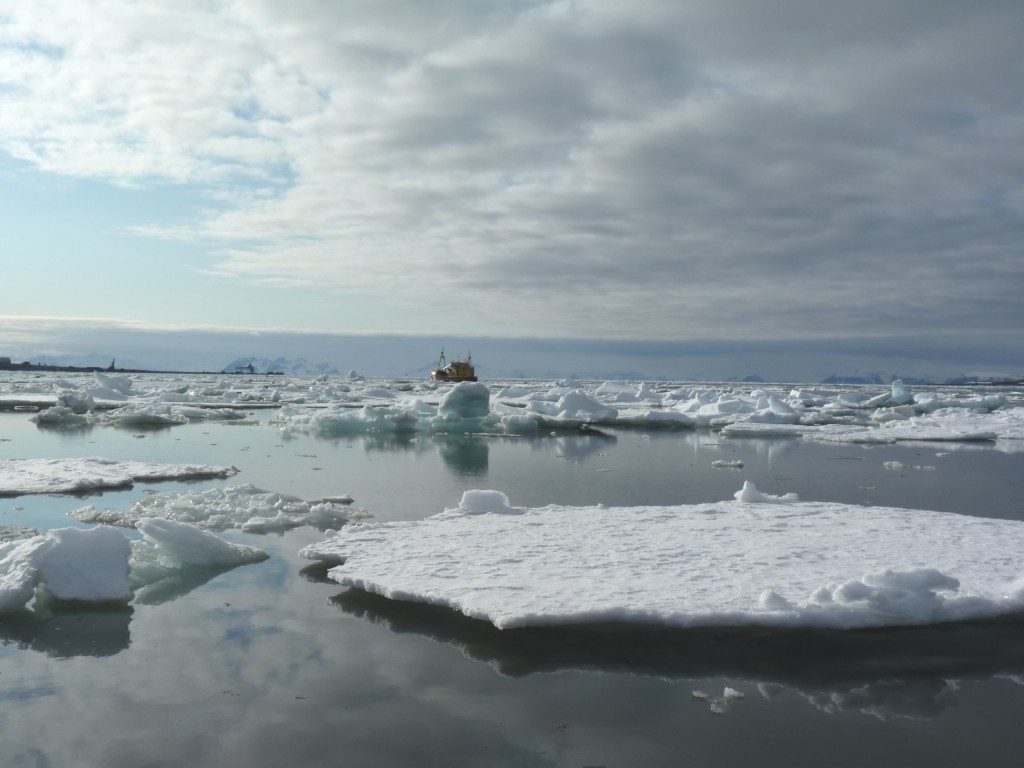

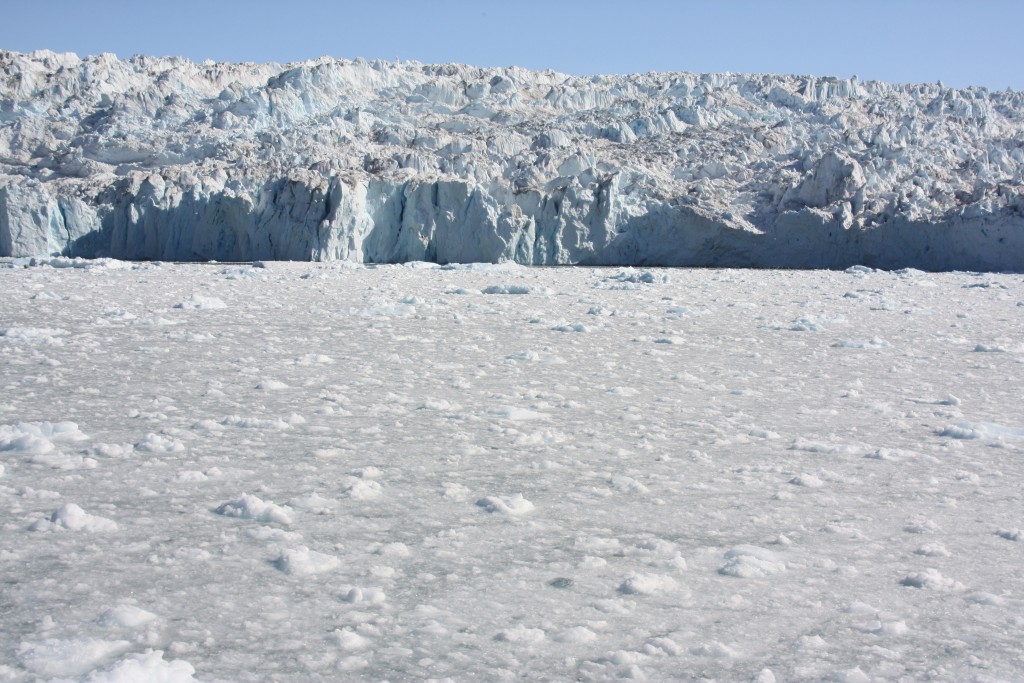


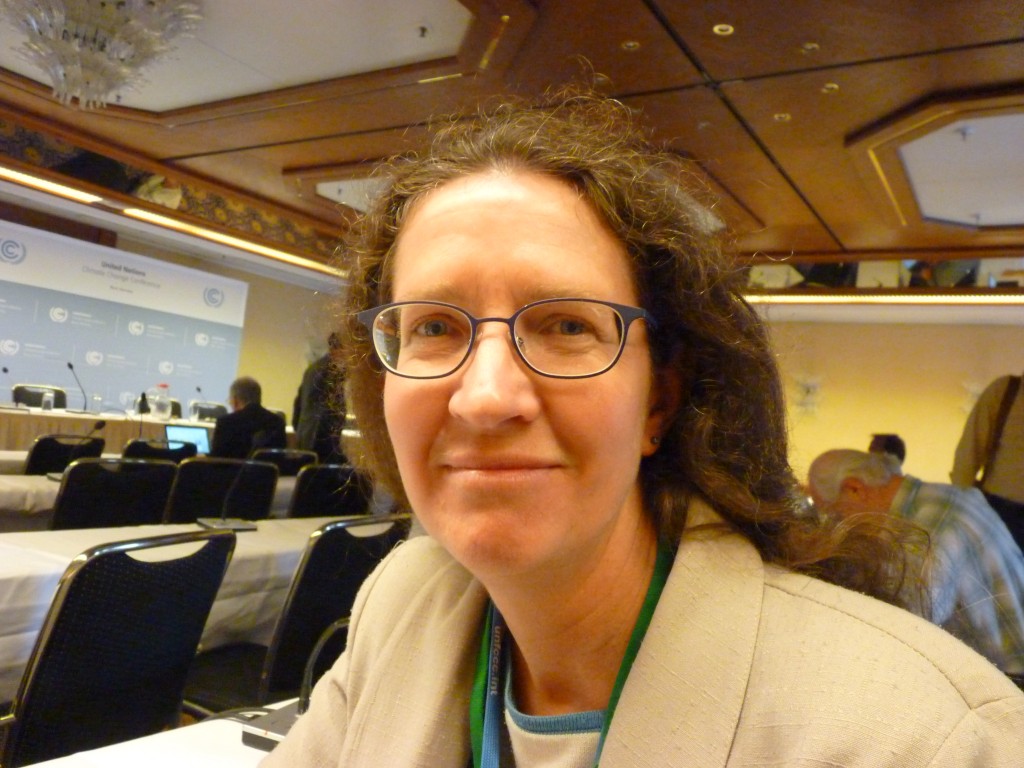
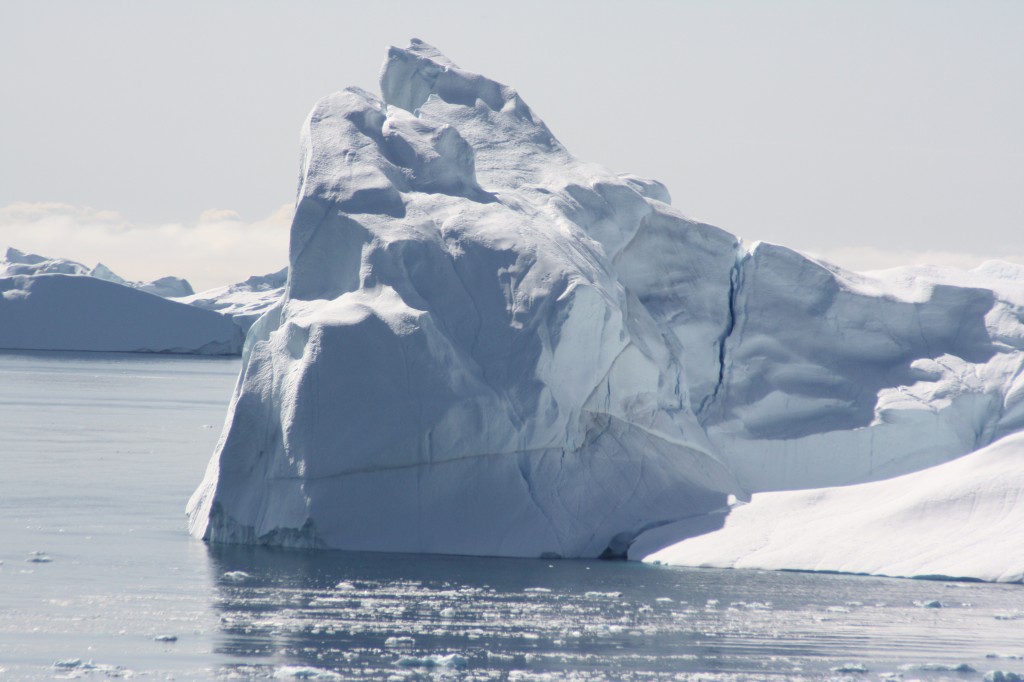
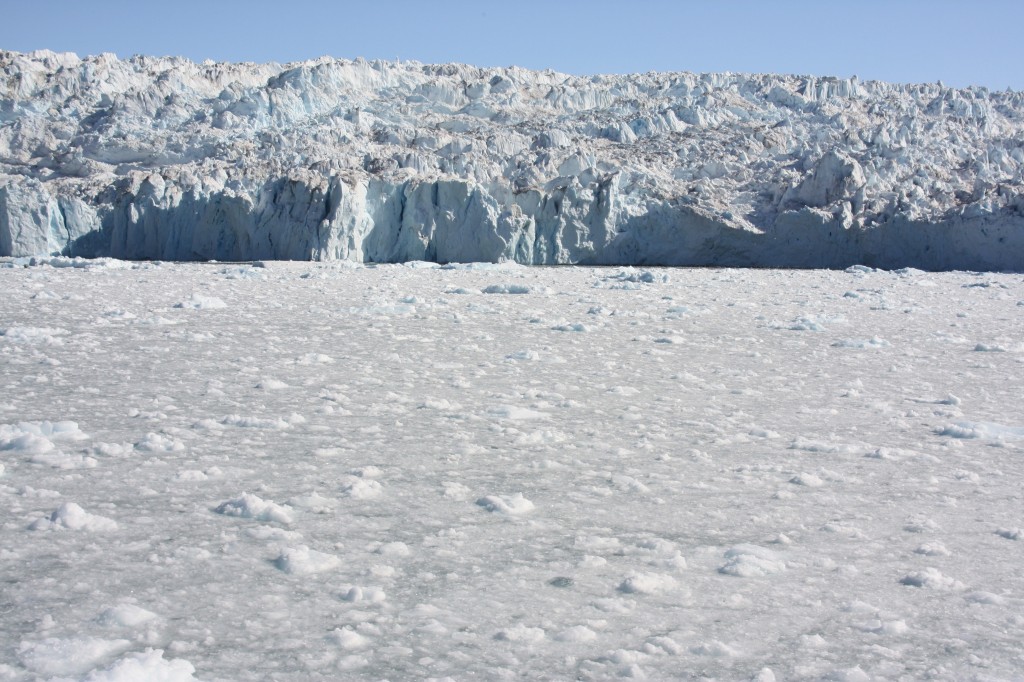

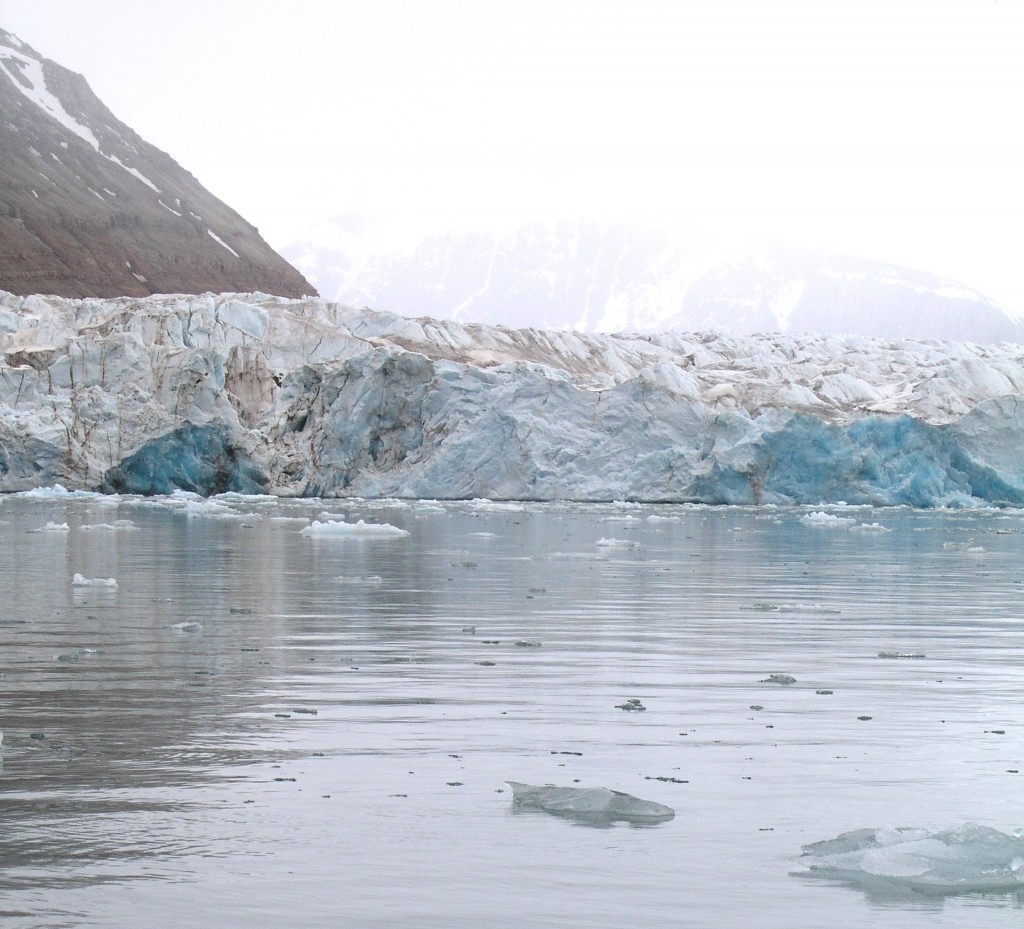
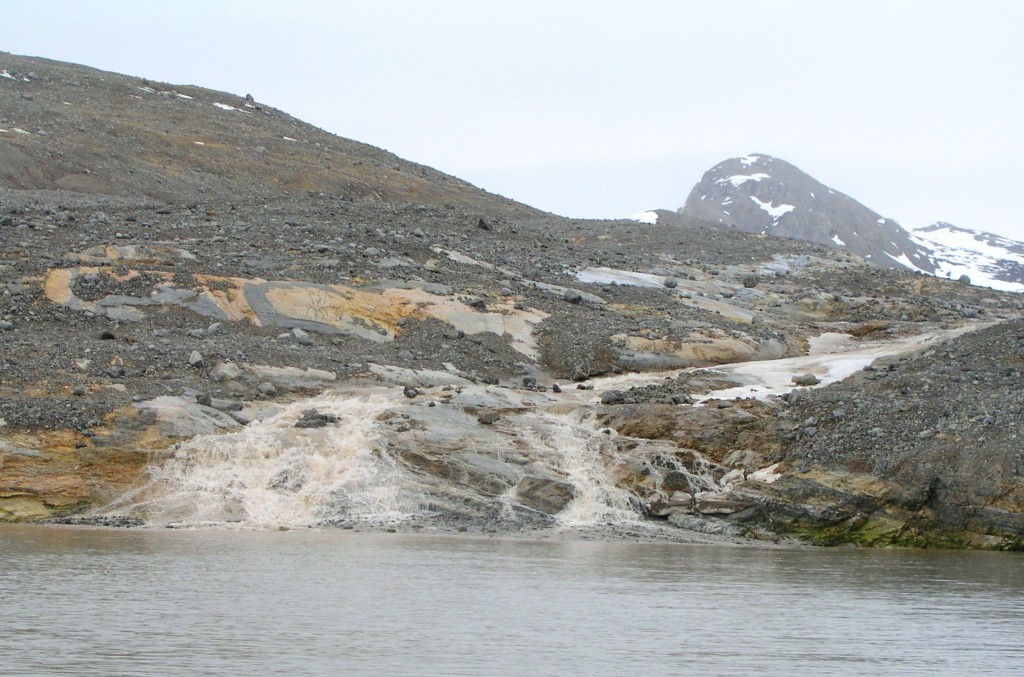
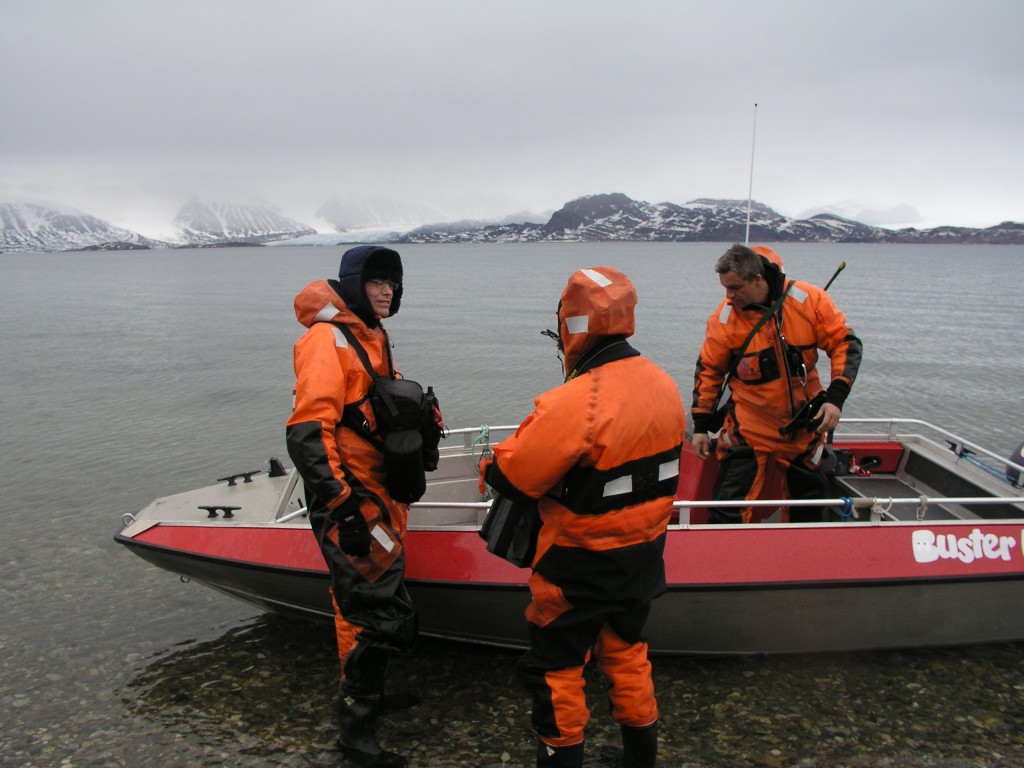
















Feedback